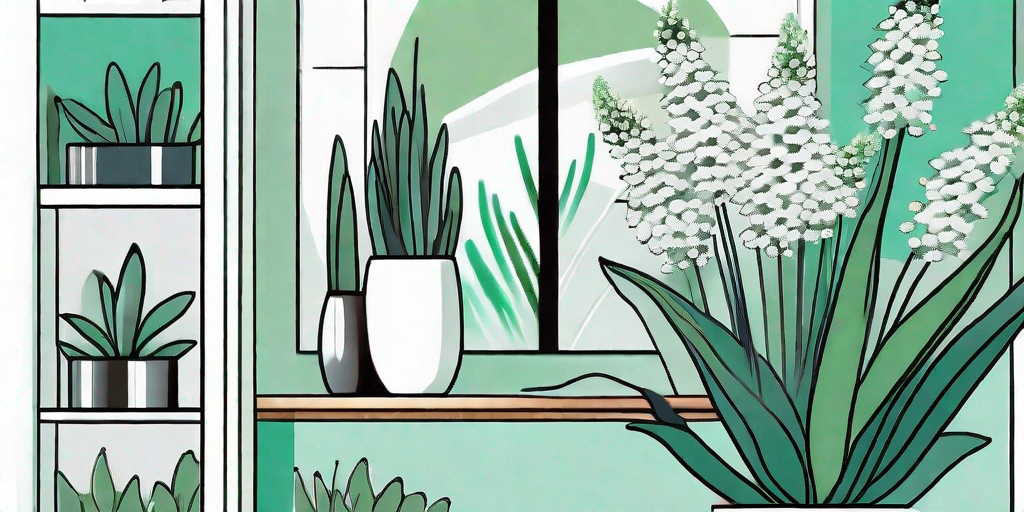
The Silver Squill, also known as Ledebouria Socialis, is a hidden gem in the world of indoor gardening. With its distinct silver-spotted leaves and bulbous base, this South African native is a conversation starter and a perfect addition to your indoor garden. But how do you grow and care for this unique plant? Buckle up, plant enthusiasts, because we're about to embark on a journey into the world of Silver Squill.
Understanding the Silver Squill
Before we dive into the nitty-gritty of Silver Squill care, let's take a moment to appreciate the beauty and uniqueness of this plant. The Silver Squill is a bulbous perennial, which means it grows from a bulb and can live for more than two years. Its leaves are long, slender, and adorned with silver spots, giving it a striking appearance.
But the Silver Squill isn't just a pretty face. This plant is also known for its resilience. It can withstand a variety of conditions, making it a great choice for beginners and experienced gardeners alike. Now that we've covered the basics, let's move on to the fun part: growing and caring for your Silver Squill.
How to Grow and Care for Your Silver Squill
Choosing the Right Pot
When it comes to choosing a pot for your Silver Squill, size matters. This plant prefers to be slightly root-bound, so a smaller pot is ideal. Look for a pot that's just a bit larger than the bulb of the plant. And don't forget about drainage! Silver Squill doesn't like to sit in water, so make sure your pot has at least one drainage hole.
As for the material, terracotta is a great choice. It's breathable, which helps prevent overwatering. Plus, the earthy aesthetic of terracotta complements the Silver Squill's natural beauty. But if terracotta isn't your style, don't worry. Any pot that meets the size and drainage requirements will do.
Providing the Right Light
Like a sunbathing beauty, the Silver Squill loves light. But it's not a fan of direct sunlight, which can scorch its leaves. Place your Silver Squill in a spot where it will receive bright, indirect light. A north or east-facing window is ideal.
If you don't have a suitable window, don't despair. The Silver Squill is a flexible plant that can adapt to lower light conditions. Just remember, the less light it receives, the slower it will grow. So if your Silver Squill seems to be in a growth slump, it might be craving more light.
Watering and Feeding Your Silver Squill
When it comes to watering your Silver Squill, less is more. This plant is a succulent, which means it stores water in its leaves and bulbs. Overwatering can lead to root rot, which is a death sentence for your plant. So how often should you water your Silver Squill? The answer depends on the season.
During the growing season (spring and summer), water your Silver Squill when the top inch of soil feels dry to the touch. In the dormant season (fall and winter), cut back on watering. Once every two to three weeks should be enough.
As for feeding, a balanced houseplant fertilizer will do the trick. Feed your Silver Squill once a month during the growing season. But remember, less is more. Over-fertilizing can harm your plant, so follow the package instructions carefully.
Common Problems and Solutions
Yellow Leaves
If your Silver Squill's leaves are turning yellow, it might be getting too much water. Cut back on watering and make sure your pot has good drainage. If the problem persists, consider repotting your plant in fresh, well-draining soil.
Slow Growth
Is your Silver Squill growing at a snail's pace? It might not be getting enough light. Move your plant to a brighter spot, but avoid direct sunlight. If that's not possible, consider supplementing with a grow light.
FAQs
- Is Silver Squill toxic to pets?
Yes, Silver Squill is toxic to pets. Keep it out of reach of cats, dogs, and other curious critters.
- Can I propagate Silver Squill?
Yes, Silver Squill can be propagated by division. Simply separate the bulbs and plant them in their own pots. Voila! More Silver Squills!
- Does Silver Squill flower?
Yes, Silver Squill produces small, bell-shaped flowers in the spring. But don't worry if your plant doesn't flower. It's still happy and healthy!
There you have it, folks! Everything you need to know to grow and care for a Silver Squill. With a little love and care, this stunning plant can be the star of your indoor garden. So why wait? Unleash the beauty of your home with Silver Squill today!















